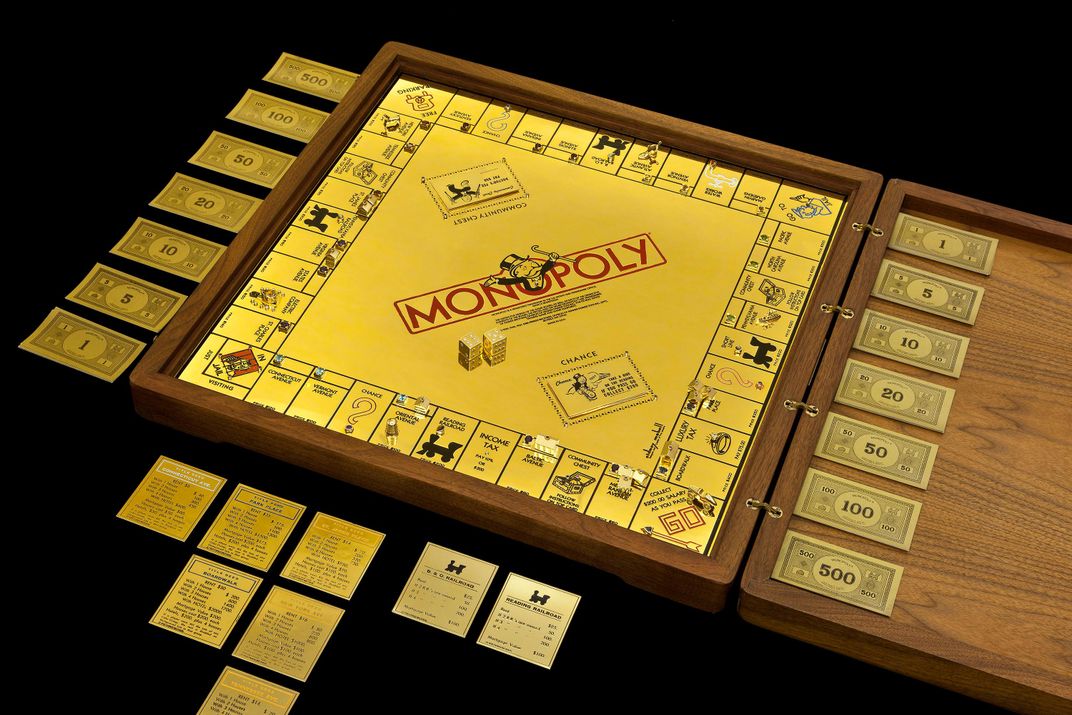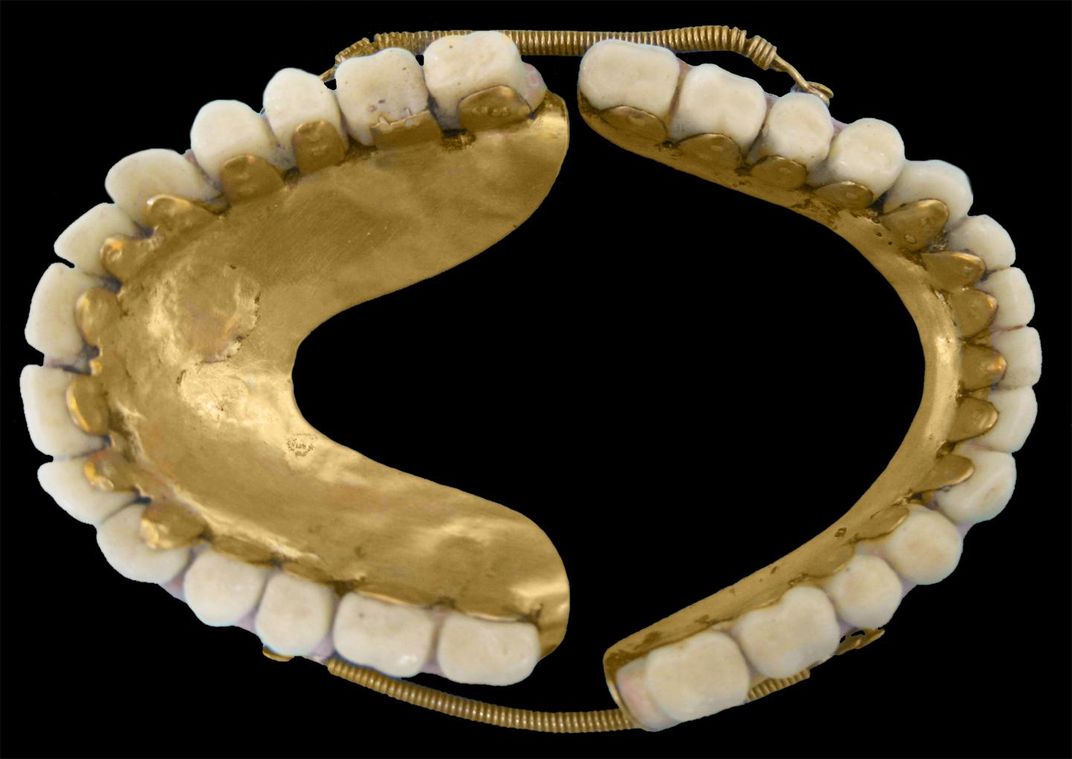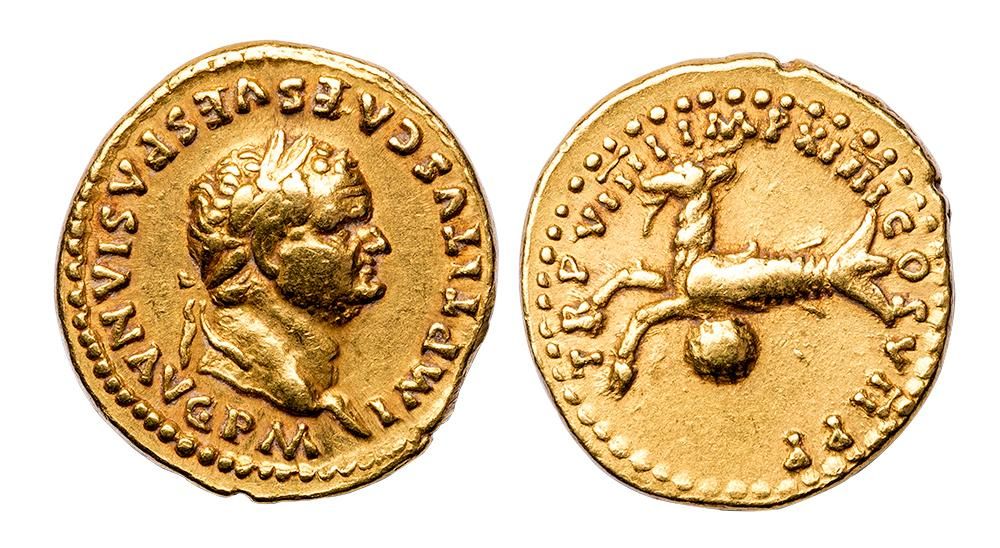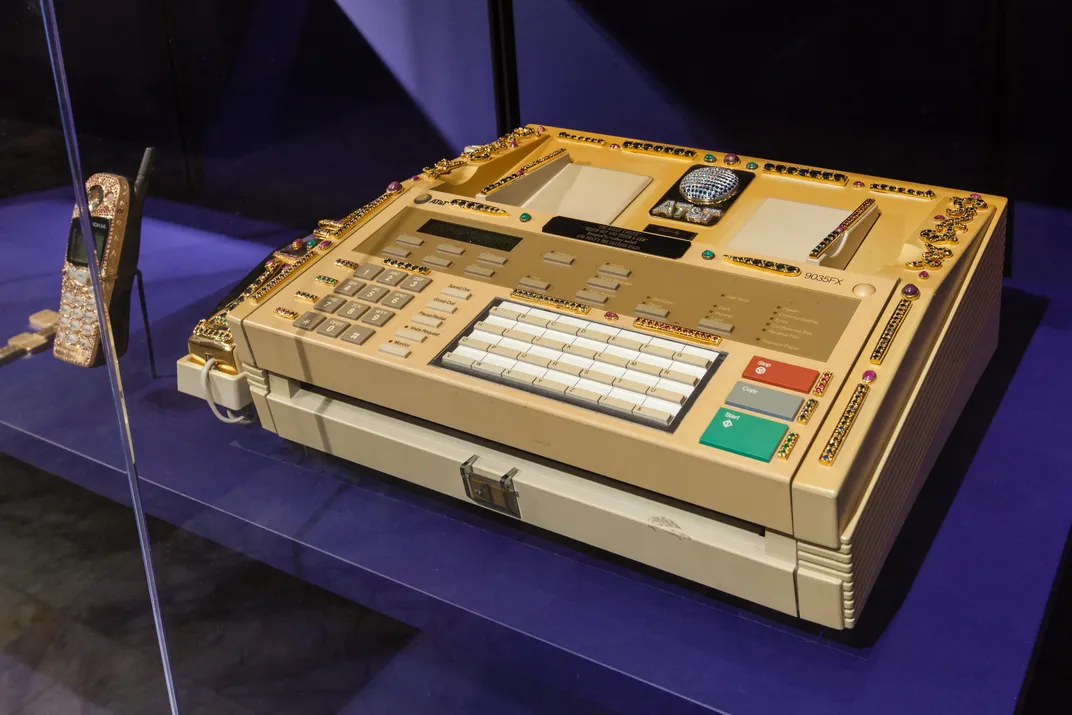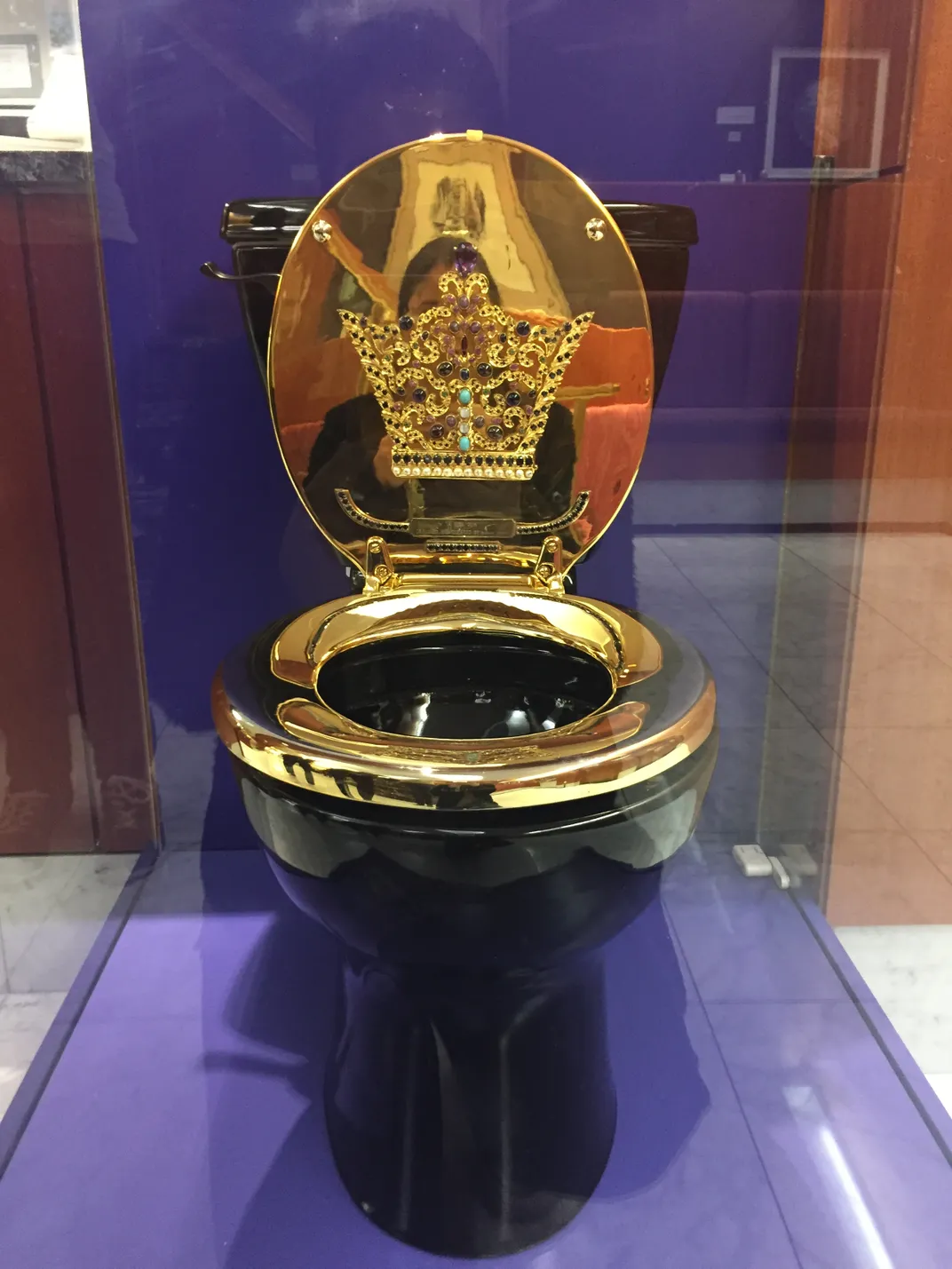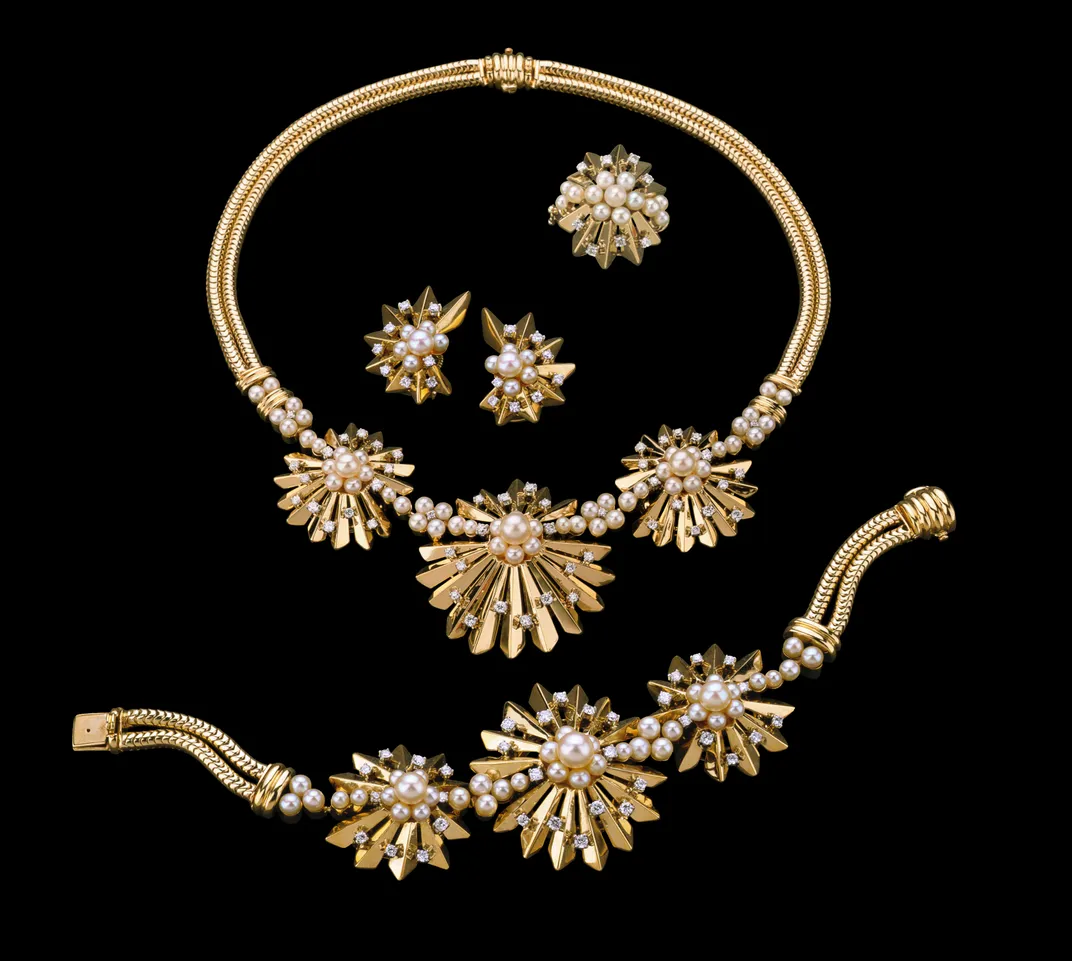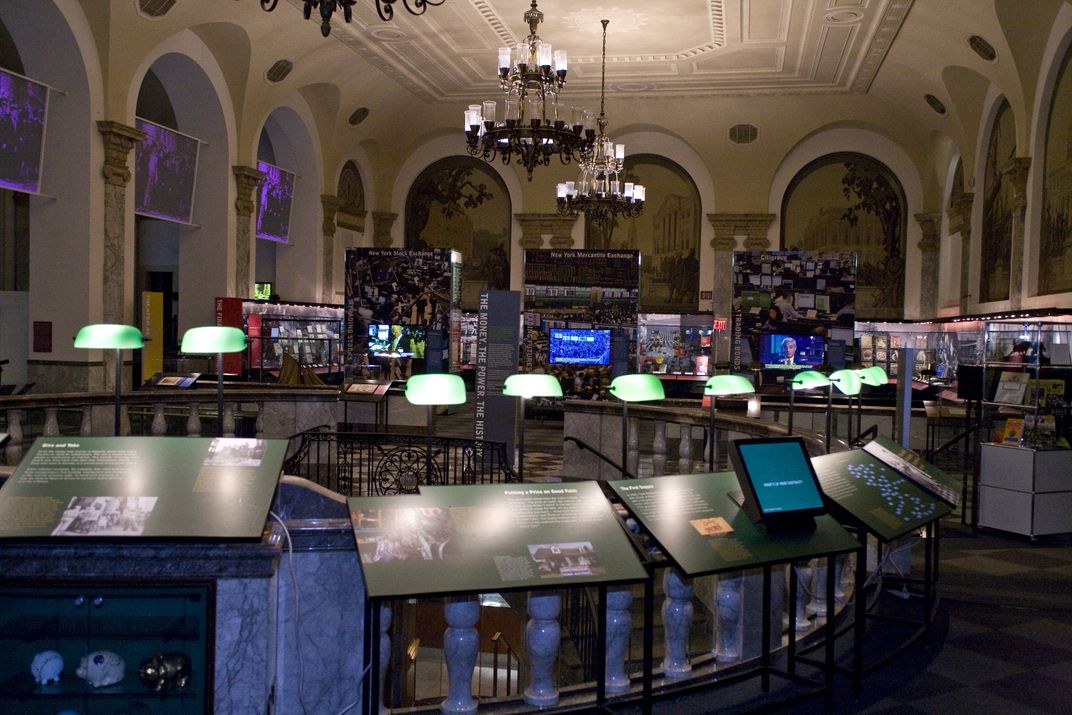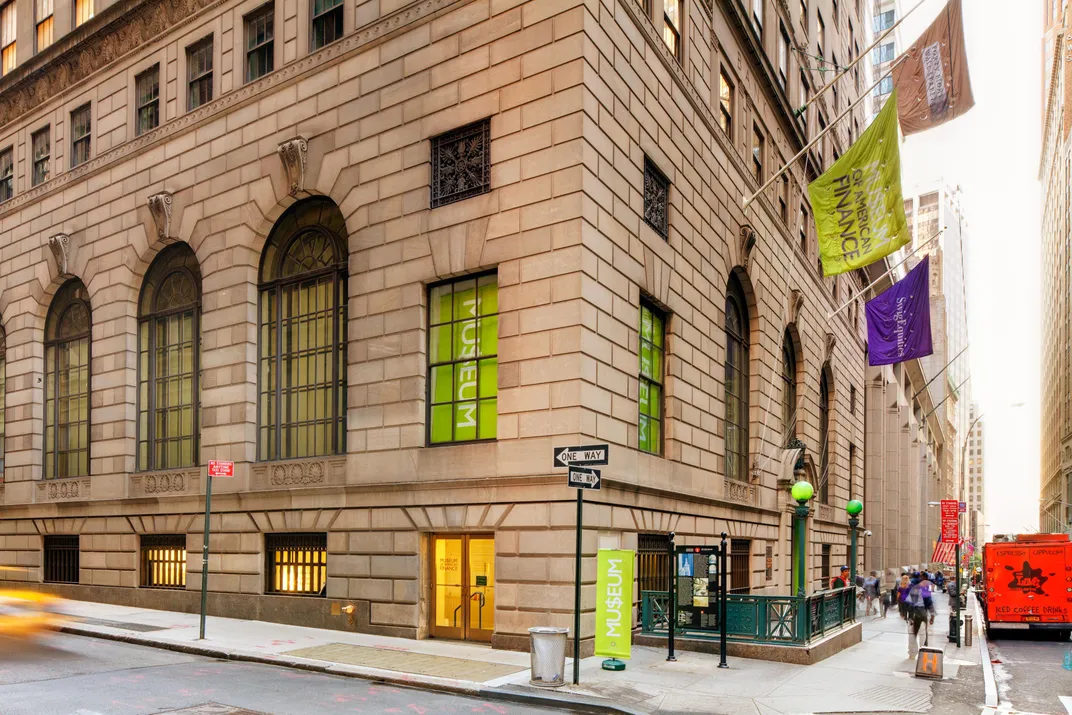From Teeth to Toilets, This Dazzling Exhibit of Gold Artifacts Has the Midas Touch
An exhibit at New York City’s Museum of American Finance tracks the allure of gold through the centuries
Everything Sidney Mobell touches seems to turn to gold. The acclaimed octogenarian artist and jewelry maker has made a name for himself by transforming everyday objects into golden masterpieces. Now, in an exhibition titled “Worth Its Weight: Gold from the Ground Up” at the Museum of American Finance, visitors can see highlights from his dazzling and quirky collection, including a 14-karat gold mousetrap baited with a diamond cheese wedge, a solid gold Monopoly board, a diamond, ruby and sapphire-encrusted Nokia cell phone and a jewel-studded, golden toilet seat fit for King Midas. Together with artifacts, artworks and gold-based technologies, they tell the story of gold, its lasting allure and its continued importance to society.
Sarah Poole, the New York City-based museum’s curator and collections manager, borrowed pieces from more than 40 public and private collections around the world. In addition to Mobell’s works, 19 of which are on loan from the Smithsonian National Museum of Natural History, the exhibit showcases one-of-a-kind jewelry from the Tiffany & Co. archives, gold bars recovered from a 19th-century shipwreck, and rare currency, including the first known gold coin dated to between 564 and 550 B.C.
“[Gold] is usually the first thing people think of when it comes to luxury,” Kristin Aguilera, the museum’s deputy director, tells Smithsonian.com. Adds her colleague, curator and collections manager Sarah Poole, “It’s nice to have all of the luxury items on display, but I also wanted to tell the story behind how gold is discovered and formed into objects.” That’s why prospecting tools like a weathered metal pan and pickaxe dating back to the 1849 California Gold Rush are featured, as well as molds used to form gold into different shapes.
The exhibit also tracks the mineral’s more surprising uses in industries like technology and medicine. Because it’s malleable, noncorrosive and biologically inert, gold in its purest form of 22 to 24 karats is frequently used in medical technologies, including dental fillings, stents, pacemakers and even targeted cancer medications. Oncologists can inject cancer patients with tiny gold nanoparticles designed to get lodged in cancerous tissue. There, the gold can accumulate harmlessly until a doctor blasts it with near-infrared light, killing the surrounding malignant cells.
Gold's noncorrosive and highly conductive properties also make it a valuable material for electronics manufactures, including smartphone makers. But don’t go taking your phone apart just yet. Mobell’s outrageous cell phone has much more gold than your average mobile device—a recent study suggests you’d have to disassemble 41 regular cell phones to yield a single ounce of the precious metal.

Other notable items on display include a full set of gold alloy dentures, circa 1800, a training helmet used by Project Gemini astronauts equipped with a gold-tinted visor to help guard against glare and a ruby-and-gold jewelry box once owned by Elizabeth Taylor.
Spend enough time at the museum, and you just might start to see the strange connections between gold’s everlasting allure and your daily life. Then again, you might leave wondering why you can’t have a gold-plated, jewel-studded toilet to call your own.
“Worth Its Weight: Gold from the Ground Up” runs through December 30, 2016 at the Museum of American Finance, a Smithsonian Affiliate museum.
Planning Your Next Trip?
Explore great travel deals
Smithsonian magazine participates in affiliate link advertising programs. If you purchase an item through these links, we receive a commission.
